Boxes get checked with ziplines, world-class bird watching, the pristine Crater Lake and a destination resort
written by James Sinks
Boy, was I mistaken.
Growing up in Klamath Falls, I’d routinely complain there was nothing to do. A teenager thing, sure, but sort of ridiculous in retrospect when—as an adult—you’re attempting to narrow lengthy lists of potential adventure ideas.
Adrenaline-fueled bouncing on the Klamath River and soaring among treetops on ziplines. Golfing the state’s only Arnold Palmer-designed links. Paddling creeks and among otters. Exploring conflict-laden history. Disappearing into volcanic caves. Fishing on more than sixty lakes. Getting a people’s-eye view of migratory birds.
And that doesn’t even count the region’s crown jewel: Crater Lake, where you can easily lose an entire day, and then some.
Turns out, there’s almost too much to do. (Mom was right.) While officially a high desert at 4,200 feet, the Klamath Basin—straddling the Oregon-California border on the eastern flank of the Cascades—is defined by water, and the tug-of-war over it.
At roughly 30 miles long and 8 miles wide, the centerpiece Upper Klamath Lake is the largest inland freshwater lake in the West. The promise of abundant irrigation helped drive the not-always-peaceful white settlement of the Basin, crisscrossed by canals dug by the U.S. Bureau of Reclamation more than a century ago. But years of droughts mean there’s not enough nowadays to meet the needs of both endangered fish and thirsty cropland.
Beginning in 2024, several dams will be breached to buoy fish health along the Klamath River, which empties from the Basin to the Pacific. As a result, the rafting season will be more seasonal through a rollicking section of legendary canyon with rapids called Satan’s Gate and Hell’s Corner, but fishing is supposed to be better.
Also because of water and wetlands, the Basin is a way station for millions of sky-filling migratory birds on the Pacific Flyway, including white pelicans. You’ll also find flocks of birdwatchers, and duck hunters come fall.
As you plot your own migration here, resist the urge to pack lightly. Bikes, boats, binoculars, boots, golf clubs, headlamps, and curiosity? It you’ve got it, bring it.
And when you spread your wings in the Basin, it’s not uncommon—after tackling far-flung adventures—to find yourself in a restaurant named after a bird.
While there, maybe raise a glass to mom, who wisely advised to get out of the house.
Day 1
CRATER LAKE • HISTORY • KICKING BACK
From the “you gasp every time” department, Crater Lake is reliably a stunner, and a perfect entryway to the Klamath Basin. Hop the boat to Wizard Island, enjoy snacks and views at Crater Lake Lodge, or cruise the scenic 35-mile rim road encircling the water-filled caldera. Then, head southeast.
Oregon Route 62 winds first to historic Fort Klamath, established in 1863 as an Army outpost to assert control over tribes and quell conflicts with settlers.
Then, if you’re accompanied by rail buffs eager to get their cabooses into the action, full-size train cars and rideable miniatures await at Train Mountain Railroad, near the town of Chiloquin. Billed as the world’s largest model railroad, the place has an incredible 35 miles of track.
Chiloquin is part of the Klamath Indian Reservation, which today is home to the Kla-Mo-Ya Casino, and in yesteryear was a starting point for one of the sadder chapters of Western expansion, the Modoc War of 1872-73.
In the early days of statehood, a band of Modocs sought their own reservation—partly because they’d been forced onto the same reservation with a rival Klamath tribe. The U.S. government refused, and ensuing battles killed civilians, Modocs, soldiers, an Army general during a truce, and ultimately led to the execution of four people including the insurrection’s leader, Captain Jack, at Fort Klamath.
While some local native history is somber, much of the indigenous culture in the Klamath is striking and beautiful. Browse a celebration of art plus 12,000-year old artifacts at Favell Museum, at the end of Main Street in Klamath Falls.
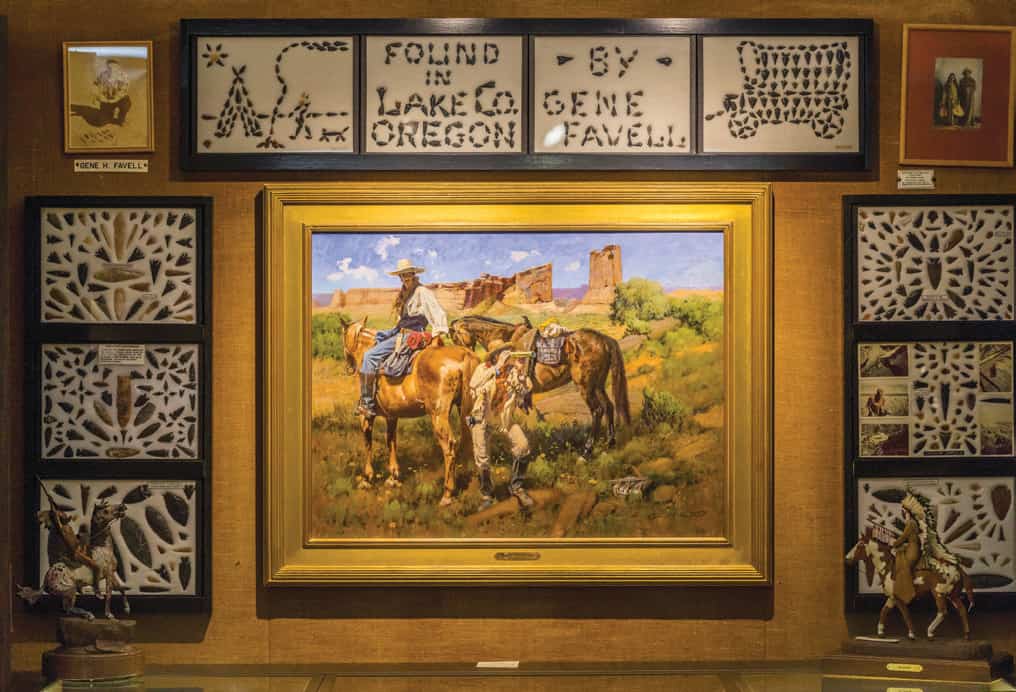
Photo by Discover Klamath Visitor and Convention Bureau
And where are the falls? Nearby. From the parking lot, it’s a short nature trail walk to the city’s namesake, a series of rapid-like waterfalls along the 1.5-mile-long Link River.
Previously known as Linkville after the river, Klamath Falls is home to almost 22,000 and was the birthplace of forestry giant Jeld-Wen, once the state’s largest private company. With an eye toward the future and a boost from Jeld-Wen’s visionary late founder, Richard Wendt, local university Oregon Institute of Technology—which sits atop geothermal wells—is a renewable energy hotspot.
Hoping to kindle some of the tourism magic that helped transform Central Oregon to the north, Jeld-Wen developed a destination resort at a Klamath Lake-bordering cattle and hay ranch whose historical owners included Roy Disney, the son of Walt Disney.
Sold to new investors in 2014, the sprawling Running Y Resort has a spa, lodge, wintertime ice arena, Arnold Palmer-designed golf links and—for pre-dinner wagers—a grass mini-golf course. The resort’s don’t-miss restaurant is aptly bird-named, the Ruddy Duck.
Afterward, soak up happy vibes downtown—plus spellbinding spicy mango margaritas—at the NiteOwl Bar. Three blocks away, get in the queue for the 15 pool tables and choose among 26 drinks on tap at Black Dog Billiards, where country music and the crack of balls will echo late into the night.
Day 2
MOUNTAIN BIKING • ZIPLINES • CANOE TRAIL
Marshy wetlands around Klamath Lake don’t just attract birds. In summer and fall, you’ll be greeted by green, non-biting gnats known locally as “midgies.” During your morning run, it’s a good idea to hold your breath if you see them.
With any luck, your first taste of the day will instead be rich organic coffee at artisan Gathering Grounds Roasters. Then, if music is your grind, head across the street to Klamath Commons Park, where you can make melodies on an assortment of outdoor xylophones.
With 330 days of sun annually, Klamath Falls has earned the deserved moniker as the Sun City of Oregon.
It also gets superlative nicknames from mountain bikers, especially those who navigate nearby Spence Mountain, with a rollercoaster of trails on a Klamath Lake peninsula. On two legs instead of two wheels? The 7,400-acre site also has miles of hiking trails.
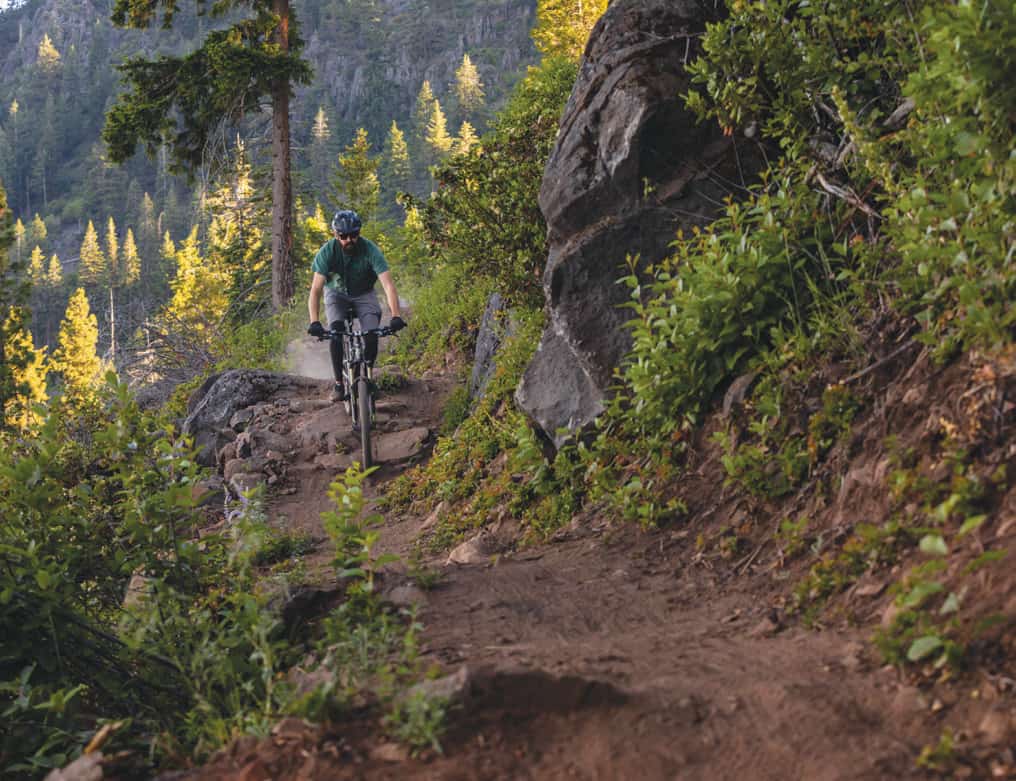
Photo by Discover Klamath Visitor and Convention Bureau
After years of negotiations with the U.S. Forest Service, Darren and Jenifer Roe in 2015 opened Crater Lake Zipline at the former low-elevation Tomahawk ski hill near Rocky Point, along Highway 140 toward Medford.
It’s the country’s first zipline course on Forest Service property, they say—and it’s a dopamine doozy, with nine runs between tree platforms and some a quarter mile long. Also find a kids’ zipline park and non-kids’ axe throwing.
“We heard all the time that there is nothing to do,” said Darren Roe, who also runs a river and hunting outfitter business. “We thought, let’s help.” (Internal voice: Where were they in the 1980s?)
Rocky Point serves as the gateway to the Upper Klamath Canoe Trail, and the Roes would be happy to send you on paddling tours with clear plastic kayaks if you didn’t bring your own boats. You also can rent kayaks, stand up paddleboards, and even pontoon boats nearby at the Rocky Point Resort.
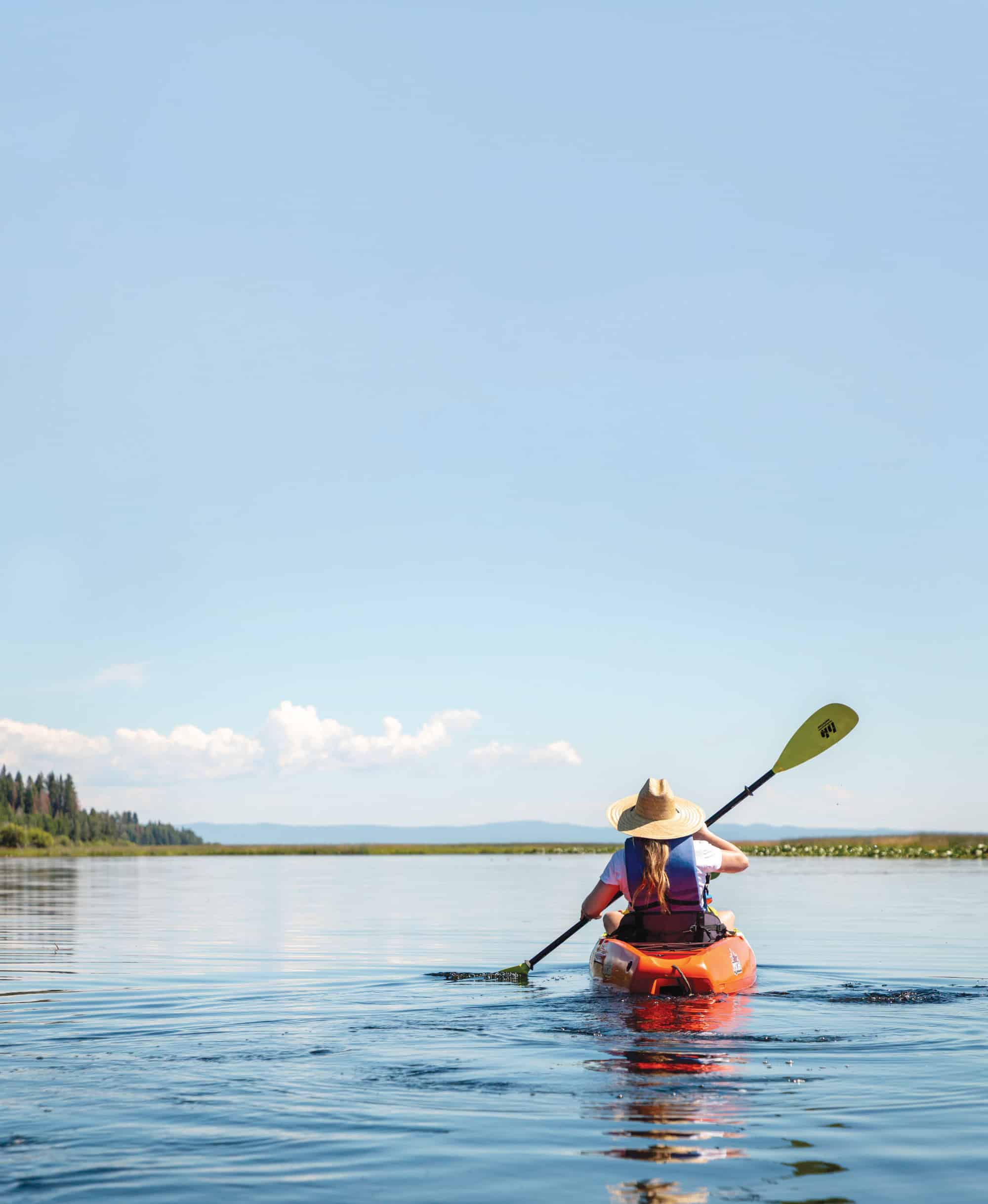
Photo by Discover Klamath Visitor and Convention Bureau
The 9-mile meandering canoe trail follows clear spring-fed creeks before they empty into Klamath Lake, which can be murky. Along the way, the local otters might give you paddling advice. Or strange looks. Crater Lake Zipline also leads nighttime moon- and starlit kayak tours.
Back in town, for old-fashioned ambience and flavorful Chinese fare, try Wong’s Café, a downtown Klamath Falls mainstay since 1940. Sticking with the avian eatery theme? Grab steak at Rooster’s Chop House.
Or if you’d prefer cocktails and coziness, unwind at the Basin Martini Bar, where the expansive menu includes tapas, seafood, tacos, cheesy pasta, and crème brulee for dessert. After a few hours on the water, a dry martini sort of hits the spot.
Day 3
LAVA BEDS • CAVES • FOOD TRUCKS
After a history punctuated with conflict and racism, resiliency and rebound are recurring themes in Klamath country.
During World War II, the West Coast’s most notorious internment camp for Japanese Americans was built near Tulelake, south of Klamath Falls. And over the years, regional economic shocks came not just from water shutoffs, but also the timber-supply war and mill closures of the late twentieth century (“Cream of Spotted Owl Soup” T-shirts were best-sellers at the former Shell station on Main Street).
Generations later, the Modoc War still echoes. You can walk in the footsteps of the tribal leader Keintpoos, better known as Captain Jack, in the rugged basalt outcroppings where his small band of warriors held off the Army for months. The onetime hideout is now known as Captain Jack’s Stronghold, and located in the Lava Beds National Monument, just across the California border.
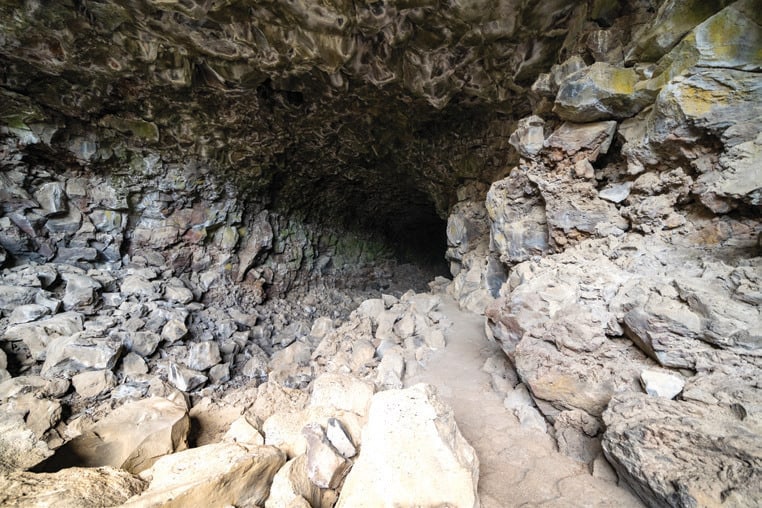
Photo by Discover Klamath Visitor and Convention Bureau
But first thing first. Breakfast is calling and Nibbley’s is the answer. The venerable eatery tops local favorite lists, and for good reasons such as eleven omelets and French toast stuffed with marmalade cream cheese.
The rural roads southward slice through pastures and irrigated fields to farm towns like Merrill, near a battle site and also home to an annual fall Potato Festival. At the Lower Klamath National Wildlife Refuge, wave to whatever birds are visiting. You also can nod and say: “I strongly suspected we had one of these” at the Oregon Drain, a canal gate at the stateline.
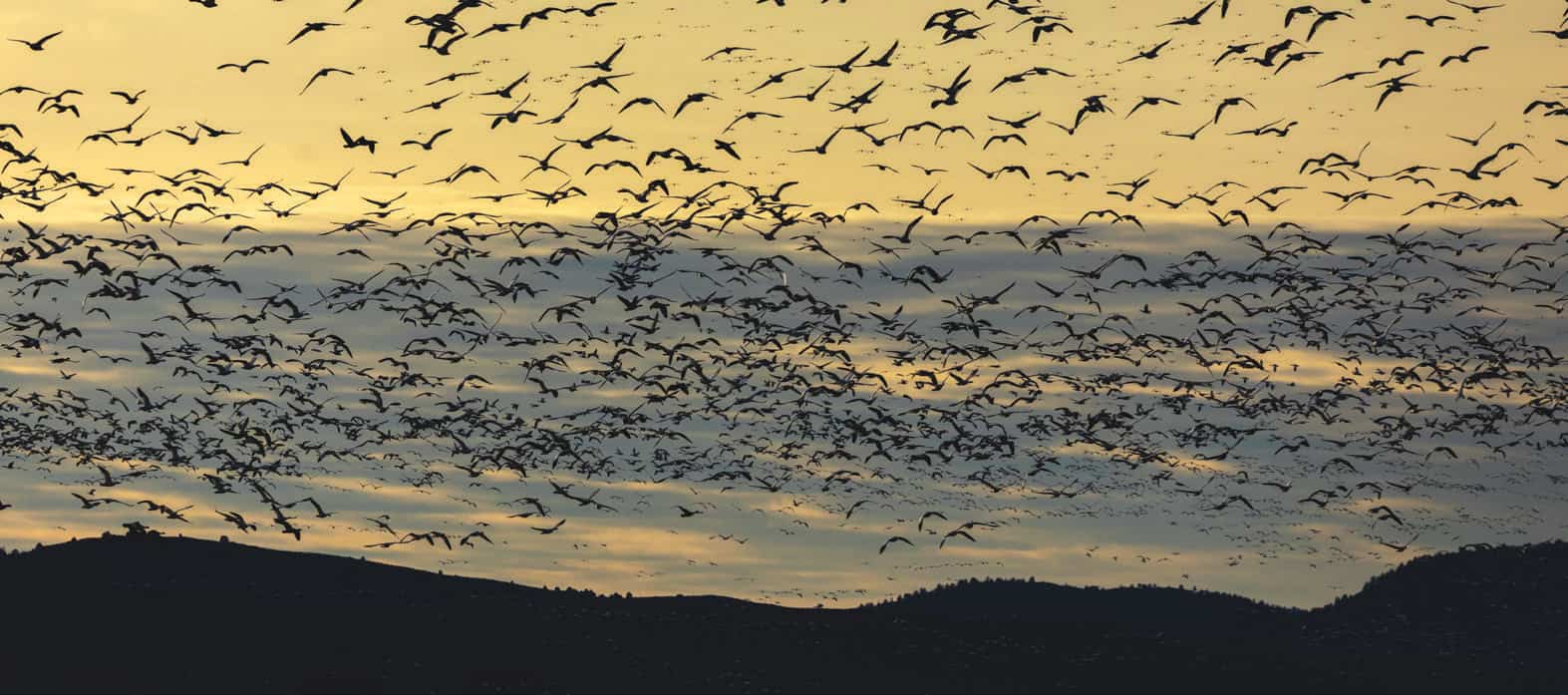
Photo by Discover Klamath Visitor and Convention Bureau
The Lava Beds are an otherworldy craggy landscape made up of volcanic flows from 70,000 years ago, under which sit some 900 lava tubes and caves. At Petroglyph Point, admire multi-thousand-year-old rock drawings.
At the National Park Service office, get a free cave permit—and also, get shoes sanitized to protect the local bat population. The office also lends flashlights if you didn’t bring one: Only one of the caves is illuminated. They’re also not warm places and, as if to reinforce that point, Skull Cave has a frozen pond at the bottom.
To dispatch post-exploring appetites, The Falls Taphouse near the college campus offers mouth-watering choices at a trio of popular food trucks. As a bonus, take in the blushing evening skyshow from the rooftop deck, if the midgies are busy elsewhere.
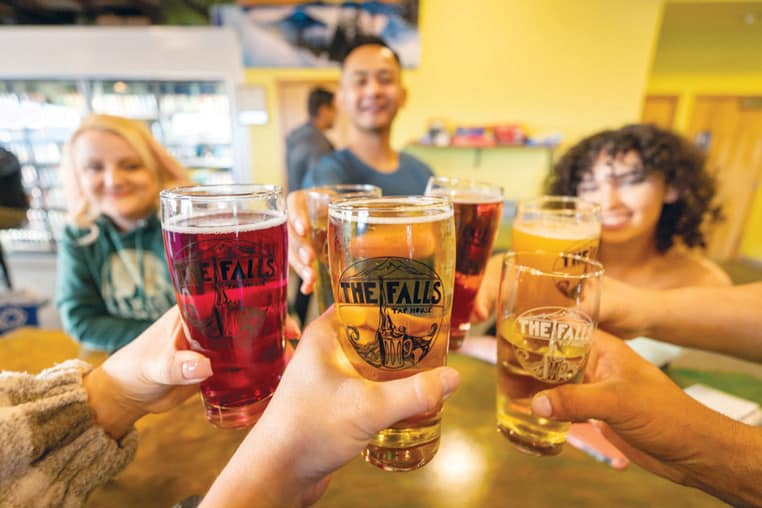
Photo by Discover Klamath Visitor and Convention Bureau
It’s an apt finale for a mom-was-right adventure trek in Oregon’s Sun City. And, maybe, to hear echoes of a Modoc prayer: “How good I have felt when the sun has shown and warmed me on a cold day. You are a great sun. Thank you for your care.”
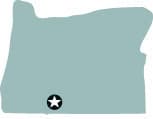
KLAMATH BASIN, OREGON
EAT
Basin Martini Bar
www.basinmartinibar.com
Gathering Grounds Café & Roastery
www.facebook.com/ggroastery
Mermaid Garden Cafe
(541) 882-3671
Nibbley’s
www.nibbleys.com
NiteOwl
www.niteowlbarklamathfalls.com
Rooster’s
www.facebook.com/roosters.steaks
Ruddy Duck
www.runningy.com/dining
The Falls Taphouse
www.facebook.com/thefallstaphouse
Wong’s Cafe
www.wongscafeklamath.com
STAY
Fairfield Inn & Suites
www.marriott.com
Running Y Resort
www.runningy.com
PLAY
Arnold Palmer Signature Golf
www.runningy.com/golf
Bird Watching
www.klamathbirdingtrails.com
Black Dog Billiards
www.facebook.com/BlackDogBilliards
Crater Lake National Park
www.nps.gov/crla/index.htm
Crater Lake Ziplines and axe-throwing
www.craterlakezipline.com
Favell Museum
www.favellmuseum.org
Kla-Mo-Ya Casino
www.klamoyacasino.com
Lava Beds National Monument
www.nps.gov/labe/index.htm
Rocky Point Resort
www.rockypointoregon.com/boat-rental
Spence Mountain
www.discoverklamath.com
Train Mountain Railroad
www.trainmtn.org


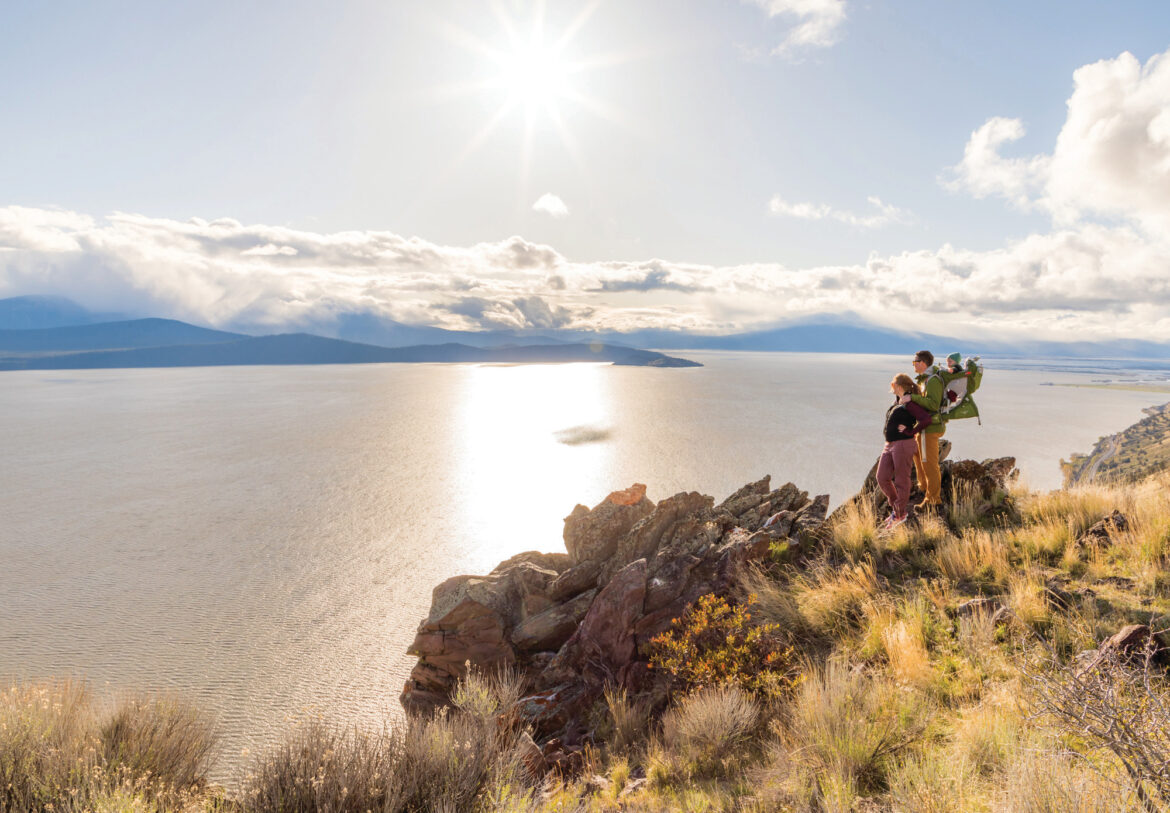
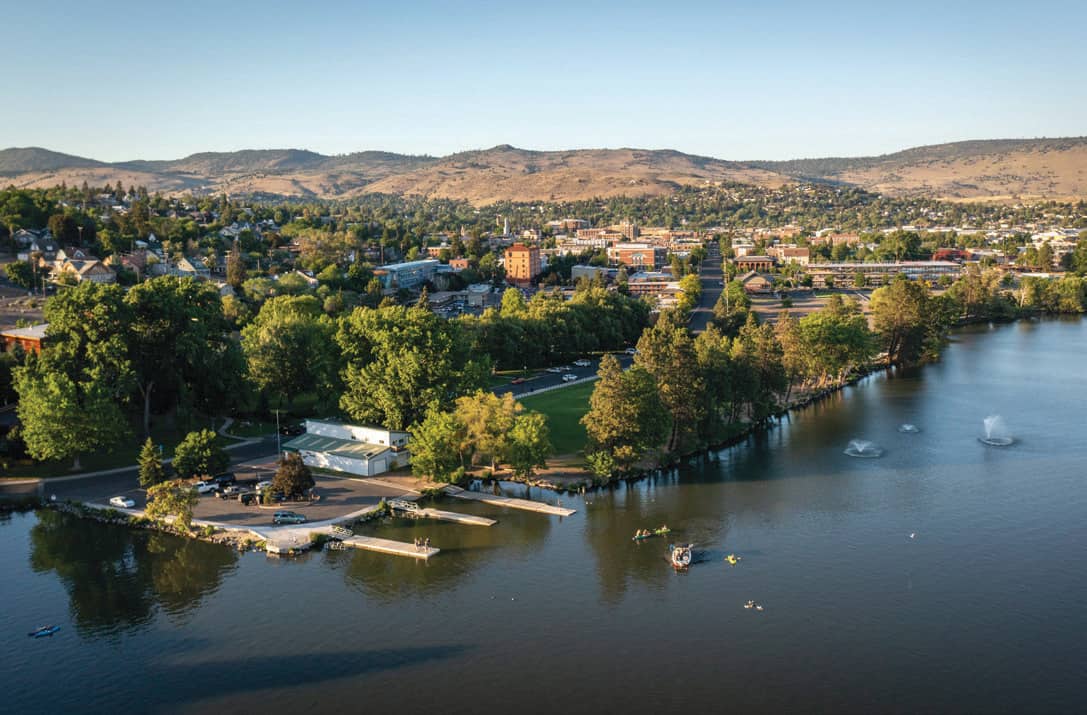
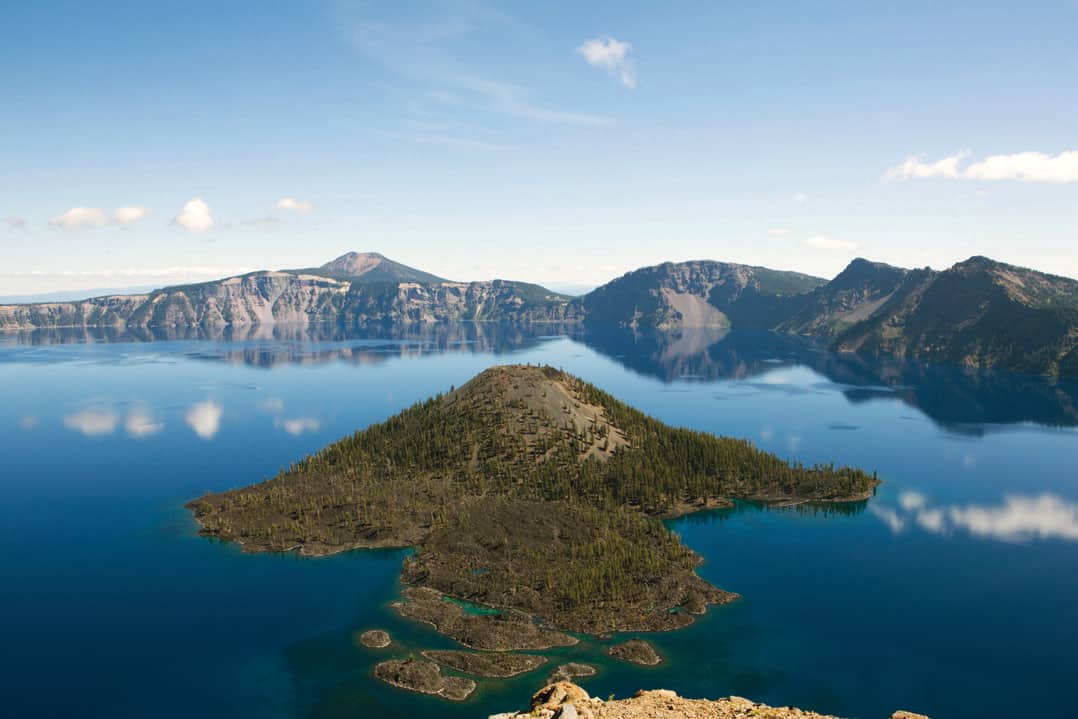
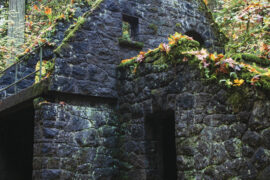

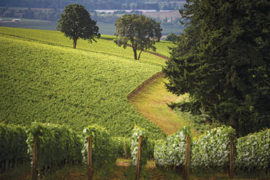
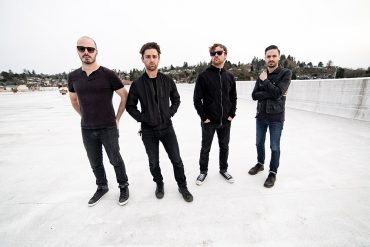



Sounds Wonderful!
Can’t wait to visit!